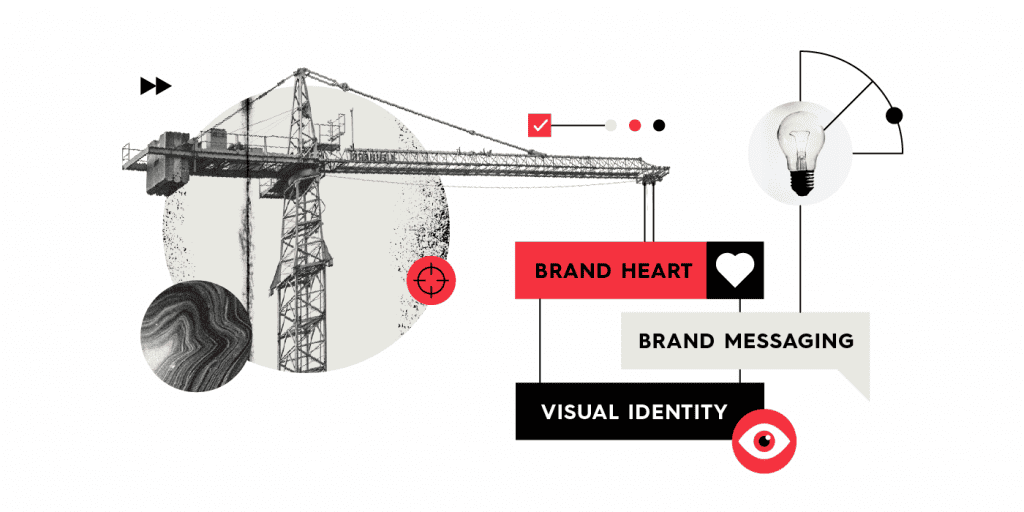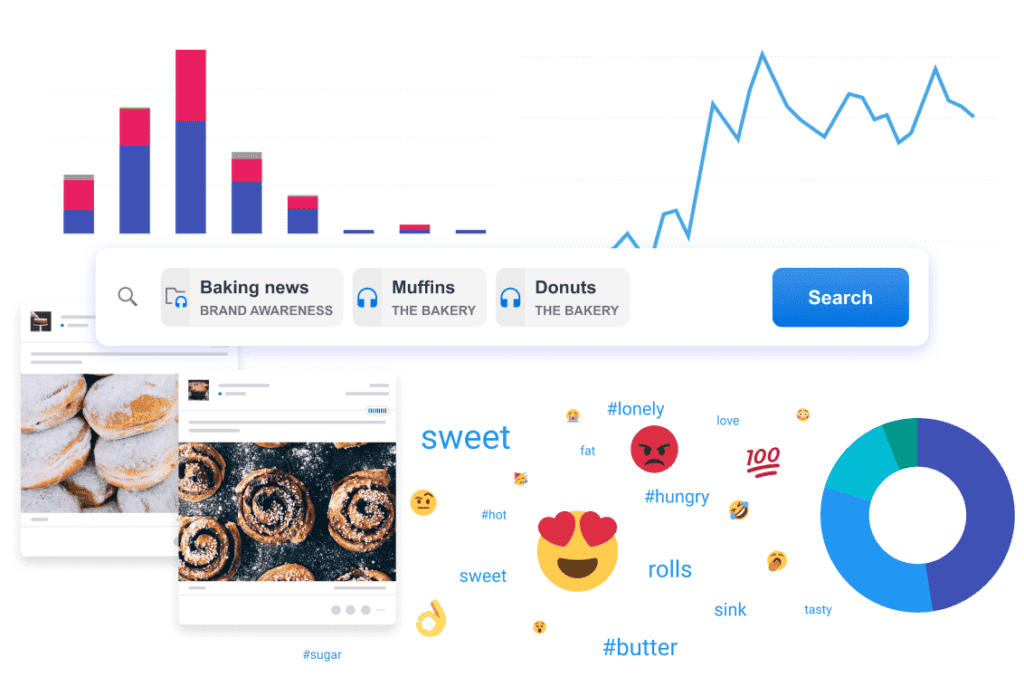How to Start Branding for Your Business Success
Branding is essential for any business, big or small, to stand out in the highly competitive market. A strong brand identity helps you establish credibility, attract and retain customers, and ultimately contribute to your business's long-term success.
Firstly, it's crucial to define your brand's purpose and values. What are you offering to your customers that no one else is? What do you want your brand to represent? Answering these questions will help you craft a clear and compelling brand story that resonates with your target audience.
We also recommend identifying your target audience and creating a unique value proposition. Understanding your audience's needs and preferences can guide you in crafting a brand message that appeals to them and sets you apart from your competitors.
Finally, it's essential to establish a consistent visual identity, including designing a logo, selecting colours, and creating brand guidelines. Consistency is critical to building brand recognition and ensuring your brand messaging remains coherent and recognisable.
Key Takeaways:
- Defining your brand purpose and values is crucial for crafting a clear and compelling brand story that resonates with your target audience.
- Identifying your target audience and creating a unique value proposition can help you stand out from your competitors.
- Establishing a consistent visual identity, including designing a logo and selecting colours, is critical to brand recognition and coherence.
Table of Contents
Understanding Brand Strategy

Building a successful brand requires a thoughtful and strategic brand strategy. At Inkbot Design, a strong brand is the bedrock of any thriving business. A well-defined brand strategy guides your development and helps inform critical business decisions.
As Jeff Bezos wisely stated, “Your brand is what other people say about you when you're not in the room.” This quote underscores the importance of purposefully shaping your brand story.
We recommend clearly defining your brand purpose to develop a robust brand strategy. What is the fundamental reason your business exists? What makes your offering uniquely valuable? Exploring these questions will reveal your authentic brand purpose and ensure your branding aligns with overall business objectives.
Next, intimately understand your target audience. Who are you seeking to serve? Gaining customer insight enables tailored brand messaging that genuinely resonates with your ideal buyers. When you build relationships with the right audience, customer loyalty organically follows.
Additionally, it creates a compelling value proposition. How do you solve your customer's problem better than alternatives? Your value proposition should highlight your competitive differentiator and consistently convince buyers to choose you. This core messaging should permeate every brand touchpoint.
An intentional branding process is crucial for growth. Begin by defining your purpose, audience, and value proposition. With these strategic foundations, you can craft an authentic brand story that attracts your ideal customers and drives business success.
Crafting Your Brand Identity
To establish a strong brand identity, it is crucial to consider various aspects of your brand that will help differentiate it from others in the market. We will guide you through the essential steps to craft a unique brand identity that resonates with your target audience and reinforces your brand positioning.
Defining Your Brand Story

Creating a compelling brand story is more important than ever in today's crowded marketplace. Your brand story allows you to connect emotionally with your target audience and differentiate yourself from competitors. Follow these tips to develop a memorable brand story that resonates:
- Identify Your Origin: Start at the beginning – why was your business initially founded? What problem were you seeking to solve? Knowing your origins will help craft an authentic story highlighting your motivations and values.
- Define Your Purpose: Articulate your driving mission in clear, inspiring terms. What greater vision or purpose does your brand strive to fulfil? Conveying a sense of meaning and impact will resonate with your audience.
- Spotlight Your Values: What core values define your brand personality and culture? Do you prioritise innovation, sustainability, and inclusivity? Highlighting shared values builds rapport and trust with customers.
- Share Your Journey: Recount critical milestones and challenges along your evolution. This adds a human touch and helps audiences relate to the real people behind your brand. Be open about mistakes made and lessons learned.
- Look Ahead: Complete your story by describing where your brand is headed. Share goals that align with your audience's aspirations to get them excited about the future.
You can form meaningful connections with target customers by developing your unique brand story. An authentic, value-driven narrative will inspire engagement across all brand touchpoints.
Designing a Compelling Logo and Visual Elements
A strong brand identity goes beyond just a name and logo – it encompasses your entire visual presentation and design aesthetic. Your logo is a crucial component, acting as the face of your brand. But your brand identity extends to other visual elements like colour palette, typography, imagery, etc. All of these work together to create a recognisable and consistent look and feel that represents your brand values and personality.
When crafting your brand identity, think deeply about your target audience and what emotions you want to elicit from them. Your colour choices, font styles, and image selections should all work to evoke the right feeling. For example, bright, vibrant colours feel energetic and youthful, while muted tones feel more refined and traditional.
Be intentional about each design decision, picking visual assets reinforcing your brand story and messaging. Maintain consistency across all touchpoints – your website, business cards, packaging, social media, and any other brand materials should all be pulled from the same visual language. This consistency strengthens brand recognition and helps customers engage more deeply with your brand.
The goal is to create something distinctive that stands out from competitors. You want customers to recognise your brand by look and feel instantly. Developing a cohesive identity thoughtfully pays off through greater brand awareness, loyalty, and equity over the long term. Your visuals are a powerful way to connect emotionally with your audience and establish your unique space in the market. Leverage them strategically as part of your broader branding strategy.
Establishing Your Brand Positioning

Brand positioning is a critical strategic process for companies to differentiate themselves in the marketplace effectively. Brand positioning aims to establish a unique identity and value proposition in the minds of target customers. It separates a brand from its competitors and resonates strongly with the intended audience.
There are several critical steps involved in developing a successful brand position:
- Analyse the competitive landscape. Conduct thorough market research to identify current trends, consumer needs and preferences, pricing strategies, and competitors' positions. This provides an understanding of opportunities or gaps where your brand can establish its niche.
- Identify your target audience. Narrow down who your ideal customers are so you can tailor messaging specifically for them. Get insight into their demographics, psychographics, buying behaviours and pain points.
- Determine your brand's identity. Define what your brand fundamentally stands for and its character. This involves establishing brand values, personality, look and feel.
- Develop a unique value proposition. Determine the key benefits or solutions you provide that competitors do not. What makes your offering superior and worth customers' attention and loyalty?
- Craft a positioning statement. Summarise what makes your brand distinct in a concise, compelling statement that will guide all marketing efforts.
- Align messaging and branding. Ensure all communications, branding elements like logo and visual identity, websites, packaging, and experiences reinforce your intended brand positioning. Consistency is key.
- Leverage marketing channels. Promote your positioning across paid, owned, earned and shared media. In particular, communicate how your brand delivers value to your audience.
Regularly reviewing your brand positioning as the market evolves ensures your differentiation remains strong amidst an ever-changing competitive landscape and target audience. A clear, unique brand position focuses on making strategic decisions and memorably connecting with your ideal customers.
Building Brand Awareness

In today's saturated market, having a solid brand that stands out from competitors is critical for business success. An effective brand awareness strategy is essential for capturing customer attention and driving growth. Here are some recommended tactics for boosting your brand visibility:
Social Media
- Maintain active social media accounts on relevant platforms like Facebook, Instagram, Twitter, LinkedIn, etc. Align your content and messaging with your core brand identity.
- Post engaging content like behind-the-scenes photos/videos, user-generated content, and content that highlights your brand values and personality.
- Run targeted social media ads to expand your reach to new demographics and locations.
- Partner with influencers and brand ambassadors to promote your products through sponsored posts and product placement.
Content Marketing
- Develop a content strategy and create blogs, ebooks, guides, videos, webinars, and other formats that provide value for your target customers.
- Optimise all content for SEO to improve brand discoverability through search engines. Include keywords in titles, headers, meta descriptions, alt text, etc.
- Promote your content through social media, email newsletters, paid ads, and outreach to build an audience. Repurpose content across different platforms.
- Analyse performance to identify high-performing content that resonates with your audience. Produce more of that content.
Influencer Marketing
- Research relevant influencers, brand ambassadors, industry experts, and thought leaders who can promote your brand to their followers.
- Offer free products or other incentives in exchange for sponsored posts, reviews, brand mentions, and other partnership opportunities.
- Develop long-term relationships with brand advocates who align with your values and can authentically represent you.
- Leverage influencer content across your owned channels by resharing posts, collaborating on co-created content, and highlighting reviews.
Consistency Across Channels
- Maintain brand consistency across all marketing channels and customer touchpoints in messaging, visuals, tone, etc.
- Develop branded assets like logos, colour schemes, fonts, images, and templates for easy brand recognition.
- Educate team members on brand standards to ensure marketing activities reinforce your desired brand identity.
Companies can increase awareness, engagement, and customer acquisition by taking a strategic, multi-channel approach to brand building. Regularly analyse efforts and refine them based on performance. Consistency and persistence are critical to brand-building success.
Consistency in Branding
Building a strong, recognisable brand requires consistency across all touchpoints. Once initial brand identity efforts have created awareness, ongoing maintenance is crucial for building familiarity and trust with your audience.
To ensure consistency, start by creating comprehensive brand guidelines. These guidelines should outline proper visual identity usage, including logos, colours, typography, imagery, and more. By providing clear instructions on representing your brand visually, you enable internal teams and external partners to reinforce your desired aesthetic.
Beyond visuals, brand guidelines should also cover branding in verbal communication. Define your brand's tone of voice, personality, mission and values. Give examples of appropriate language in everyday use cases like marketing, advertising and customer interaction. A consistent style and messaging align communications with your brand identity.
With guidelines established, monitor usage and update as needed. As your business evolves, your brand may need to as well. Regularly review language and visuals across channels to ensure proper use. When business goals or values shift, update guidelines to keep branding consistent with core identity.
Consistency also means maintaining aligned customer experiences. Ensure staff interactions, marketing materials, online platforms and more reflect brand values. Consistent language, visuals and experiences build familiarity and trust with your audience.
You reinforce brand recognition and loyalty by diligently following established guidelines, monitoring usage, and updating as needed. Consistency enables audiences to understand your brand promise wherever they engage intuitively. Maintaining this recognizability and familiarity then pays dividends in lasting customer relationships.
Measuring Brand Success

At this stage of brand development, it is crucial to track the success of your branding efforts. By measuring key metrics, you can evaluate the effectiveness of your strategies and make informed decisions to improve your brand awareness and recognition.
Critical Metrics for Measuring Brand Success
Several key metrics can be used to measure brand success:
- Brand Recognition: Measure the level of brand recognition among your target audience through surveys, online mentions, and social media engagement to determine if your brand is well-known.
- Customer Loyalty: Assess customer loyalty by tracking repeat purchases, customer satisfaction ratings, and retention rates to determine if your brand is creating meaningful connections with its customers.
- Market Share: Analyse your brand's market share compared to competitors to determine if your brand impacts the industry. This includes monitoring revenue, sales volume, and customer acquisition rates.
By regularly measuring these metrics, you can gain valuable insights into your brand performance and identify areas for improvement.
Using Analytics Tools to Measure Brand Success
Analytics tools such as Google Analytics, SEMRush, and Hootsuite can provide valuable data to measure brand success. These tools can help you:
- Track website traffic and engagement
- Monitor social media reach and engagement
- Monitor online mentions and sentiment
With this information, you can make data-driven decisions to improve your brand's performance and achieve long-term success.
Overall, measuring brand success is an essential step in brand development. By regularly monitoring key metrics and using analytics tools, you can make informed decisions to improve your brand awareness, customer loyalty, and market share.
Evolving Your Brand

As your business grows and evolves, you must ensure your brand keeps pace with the changes. Your brand identity should reflect your business's values, vision, and ambitions. Here are some strategies for evolving your brand while maintaining consistency and positioning it for continued success in the market.
Reposition Your Brand
Repositioning your brand means changing the way people perceive your brand in the market. If your business has outgrown its original positioning, it's time to move into a new market segment. However, repositioning comes with risks, so performing a thorough market analysis and developing a new brand strategy is essential before making significant changes.
Refresh Your Visual Identity
Your visual identity is a crucial element of your brand identity. However, after a while, your logo, colour palette, and typography may need updating to stay fresh and relevant. Refreshing your visual identity can help your brand stand out and reflect changes in your business's values, customer base, or products and services.
Communicate Changes Effectively
Suppose you decide to make any significant changes to your brand. In that case, effectively communicating these changes to your audience is essential. Your customers may have grown accustomed to your brand's current look and feel, and any changes could cause confusion or uncertainty. Therefore, it's crucial to communicate the changes explicitly and position them positively to avoid any negative impact on your brand.
To summarise, evolving your brand is essential to keeping your business competitive and relevant. By repositioning your brand, refreshing your visual identity, and communicating changes effectively, you can ensure that your brand stays aligned with your business's goals and continues to resonate with your target audience.
Conclusion
Brand building is an ongoing process that requires a strategic approach and consistent efforts. By following the expert tips and insights shared in this article, we are confident that you will be able to establish a strong brand identity and enhance brand recognition in the market. Remember, a well-defined brand strategy is the foundation for success, while maintaining consistency across all brand touchpoints is crucial for building customer trust and loyalty.
Effective brand-building strategies, such as leveraging social media platforms and implementing content marketing techniques, can help increase brand awareness and reach a wider audience. Measuring the success of your branding efforts through crucial metrics, such as brand recognition and customer loyalty, is essential for evaluating your strategies and making necessary adjustments.
Continuous Evolution
As your business evolves, your brand must evolve, too. Whether it's repositioning your brand, refreshing your visual identity or communicating changes to your audience, continuous adaptation while staying true to your core values is vital to long-term success.
At Inkbot Design, a well-executed brand strategy and consistent branding efforts are crucial for building a successful brand. Contact us today to learn how we can help you build a strong brand and achieve your business goals.
FAQ's on How to Start Branding
What is branding?
Branding refers to creating a unique identity for a business or product through various strategies and visual elements. It involves defining your brand's purpose, values, and positioning in the market to establish a strong connection with your target audience.
Why is brand strategy important?
Brand strategy is essential for the long-term success of a business. It helps you define your brand's direction and differentiate yourself from competitors. A well-defined brand strategy guides all branding efforts and ensures consistency in messaging, visual identity, and customer experience.
How do I create a strong brand identity?
Crafting a solid brand identity involves defining your brand's story, designing visual elements such as a logo and colour palette, and establishing your brand's positioning in the market. Creating a consistent and cohesive brand identity that resonates with your target audience is essential.
How can I build brand awareness?
Building brand awareness involves implementing strategies to increase visibility and reach among your target audience. This can include leveraging social media platforms, creating valuable content, collaborating with influencers, and engaging in PR activities to enhance your brand's visibility and recognition.
Why is consistency important in branding?
Consistency in branding helps build trust and recognition among your target audience. Maintaining consistent messaging, visual identity, and customer experience across all brand touchpoints creates a sense of reliability and professionalism that strengthens your brand's reputation.
How do I measure brand success?
Brand success can be measured through various metrics, such as brand recognition, customer loyalty, and market share. Utilising analytics tools and conducting market research can provide valuable insights into the effectiveness of your branding strategies and help you make informed decisions.
How can I evolve my brand?
As your business grows and changes, it's essential to evolve your brand accordingly. This can involve repositioning your brand, refreshing your visual identity, and effectively communicating changes to your audience. Adapting to market trends and customer feedback can help ensure your brand remains relevant and resonates with your target audience.
